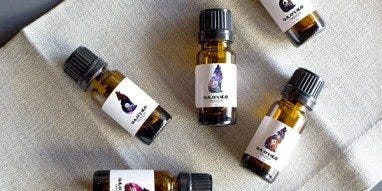The Chemical Properties of Plastic
Article By : Jonathan @ BottleStore
You might not often think about the many different types of plastic or even the specific type of plastic present in something as common as a water bottle. "Plastic" is a general term that includes various chemicals and synthetic materials. With its lightweight composition and strength, plastic is a prevalent material in many different industries. When heat and pressure are applied to plastic, it can be molded or remolded into various shapes. Most plastic contains polymers, and they fall into the main categories of either thermoplastics or thermosets. Thermoplastics can be heated to soften and mold them. With the reapplication of heat, they will melt again. Thermosets can also be heated to mold them. However, after solidifying, they will not melt again.
Acetals are a type of strong and rigid plastic used for hardware components. Within machinery, you might find components such as gears or bearings made out of acetals. This type of plastic is also commonly found in paint sprayers, fans, valves, and pumps because the material will not become brittle even at high temperatures. Chemical solvents will not dissolve acetals, and this material resists moisture absorption. With its properties, acetal plastics are present in various industrial applications, and it comes in different colors and grades.
Acrylic plastic is a polymer material that contains acrylic acid. This strong and transparent plastic is a popular choice for light fixtures, beverage dispensers, and dishes. With its transparency and strength, acrylic also makes an ideal lens material in eyeglasses, binoculars, and cameras. Acrylics resist weathering and UV radiation, and it's possible to mold, form, color, cut, and drill this material to create various items. Acrylics are even present in vehicle taillights, windshields, skylights, and ceiling tiles.
Amino resins are an example of a thermosetting polymer that contains melamine and urea. Amino resins are present in adhesives used for wood products such as particle board. Amino plastics are moldable, strong, scratch-resistant, and heat-resistant. They are present in molding powders, and a number of molded plastic items, such as buttons, door knobs, and coffee makers, contain this type of plastic. Amino resins may also be present in the coating or film applied over products to increase solvent resistance and hardness.
Cellulosics includes various types of plastics that come from cellulose, which comes from wood pulp. In its natural form, cellulose contributes to the innate strength and resilience of wood. While the different types of cellulosics are unique, they also share some common characteristics, such as strength and heat-resistance. A number of common items contain cellulosics, including toys, fishing tackle, the frames of eyeglasses, and even steering wheels.
Polyurethanes are a common plastic found in a wide variety of items in and around the home. Depending on the manufacturing process, polyurethanes can be either flexible or rigid. Polyurethane plastics resist scratching and tearing. This material is used to make adhesives, construction insulation, furniture cushions, mattresses, and the soles of shoes.
Styrene is the chemical used to make polystyrene plastics and resins. Styrenes are conducive to melting and molding, so this type of plastic is used to make a number of items. Styrenes are smooth and clear, and they can be colored various hues. Plastic utensils, food storage containers, egg cartons, and even the clear plastic of envelope windows often contain styrene plastics.
Vinyl plastics are exceptionally versatile and durable. Vinyl contains chlorine and ethylene, and this material can be manufactured into a rigid, semi-liquid, or flexible substance. Clear or colored, thin or thick, vinyl resists chemical wear well. The chemicals that make up vinyl also give it an exceptional flame-retardant ability. The one sensitivity of vinyl is sunlight, so prolonged exposure to ultraviolet rays will damage this material. Vinyl plastic might be present in shower curtains, rain gear, and the seat covers found in vehicles. Because of its flame-retardant properties, vinyl is also commonly found in electrical wiring components.
Learn about the chemical properties of plastics by visiting the following Internet resources:
- What Are Phthalates?
- Types of Plastic Resins
- Types of Plastics
- Physical Science Plastics Identification Experiment (PDF)
- Types of Polymers
- Polymer Information
- Lifecycle of a Plastic Product
- Fact Sheet: Phthalates
- Cellulose Nitrate Plastic (Celluloid) in Archaeological Assemblages: Identification and Care (PDF)
- Chemical of the Week: Polymers
- Polymer Properties (PDF)
- Extraction of Phenolics From Plants (PDF)
- Plastics to Fuel Summary (PDF)
- Biodegradable Plastic: Its Promises and Consequences
- About Vinyl
- What Is Polyurethane?
- Amino Resins









